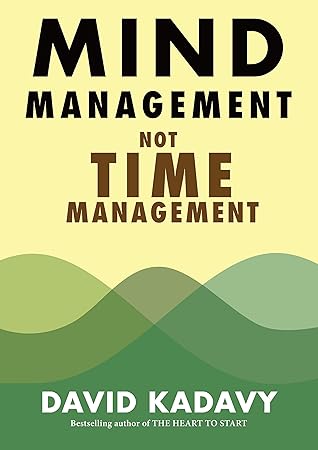More on this book
Community
Kindle Notes & Highlights
Mind Management, Not Time Management: Productivity When Creativity Matters (Getting Art Done Book 2)
by
David Kadavy
Read between
November 7 - November 15, 2023
Once I gave myself permission to record ideas, without feeling any obligation to do anything with those ideas, capturing random ideas became incredibly productive. I freed up the conscious mental energy I was wasting on these open loops by writing them down. Yet, by writing them down, I also created subconscious open loops that allowed those ideas to incubate.
Remember, front-burner projects command your best creative energy. Back-burner projects, you can complete with minimal creative energy, thanks to reliable Creative Systems.
Maybe your simmer projects become something someday, maybe they don’t. In the meantime, you have your source materials stored somewhere you can find them.
I personally keep my simmer projects in folders labeled “R&
Now, I give myself permission to keep projects in R&D until I’m sure I want to pursue them further.
If I get a new idea for one of my R&D projects, I make sure to record it – then I let it simmer indefinitely.
Everything we experience in life is an opportunity to learn something, to make meaning out of it, and to maybe teach someone else what we learned along the way.
To start managing your creative energy, start by rethinking time.
Work according to clock-time only when it really matters. Otherwise, work according to
event-time. Don’t try to cram certain outcomes into units of time. Instead, use units of time as rough guides to allocate your energy into activit...
This highlight has been truncated due to consecutive passage length restrictions.
Find one block of time each day that you can clear away, and spend that time in the Generate mental state. You’re probably most creative first thing in the morning, so experiment with the First Hour Rule. Remember, your Creative Sweet Spot is not the time when your mind is sharpest. You want to think divergently so you can have insights. Later on, you can think convergently and turn those ideas into finished products. When a creative problem gets tough, remember to respect the Four Stages of Creativity. If you’re struggling to find a moment of Illumination, you probably need more Preparation
...more
This highlight has been truncated due to consecutive passage length restrictions.
Notice the mental states in your work. Remember: PERGPAR – PER Golf, PAR. Prioritize, Explore, Research, Generate, Polish, Administrate, and Recharge. It takes practice to recognize what mental states best fit the various parts of your work. Build mastery in one mental state at a time. Start by separating out Generate work. Then make Priori...
This highlight has been truncated due to consecutive passage length restrictions.
Choose grippy tools when your ideas are starting to develop, and choose slippy tools when you’re ready to execute.
Start searching for Creative Cycles in your work, and in the rhythms of the world around you. The better you can break your work into repeatable projects, the better you’ll become at recognizing Creative Cycles and harnessing their power. Start building a weekly routine, and notice the patterns you see throughout longer cycles, such as a typical month or a typical year.
As you master Creative Cycles, you can start building Creative Systems. Create Sloppy Operating Procedure document...
This highlight has been truncated due to consecutive passage length restrictions.
Capture Creative Opportunities as they come, and store them where you can develop them later. Build a series of Task Triggers, so you can be confident you’ll engage with your ideas when needed. Try to make your Task Triggers reliable, context-specific, easy-to-implement, and attached to the action. After enough practice with the Seven Mental States, you should be ready to organize your tasks not by project, but by mental state.


